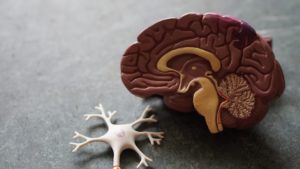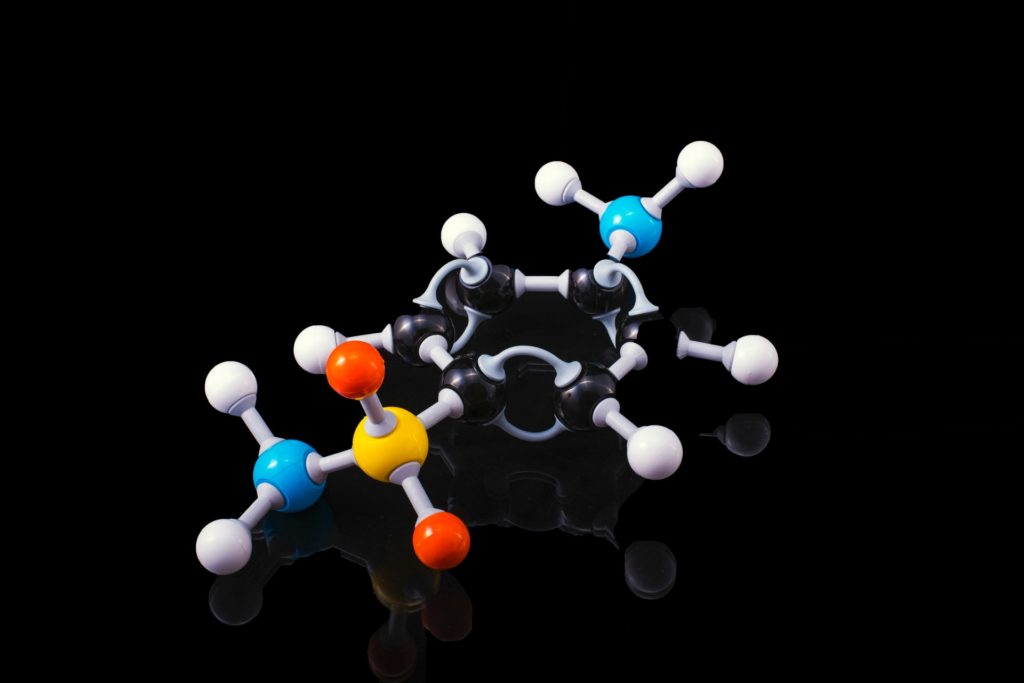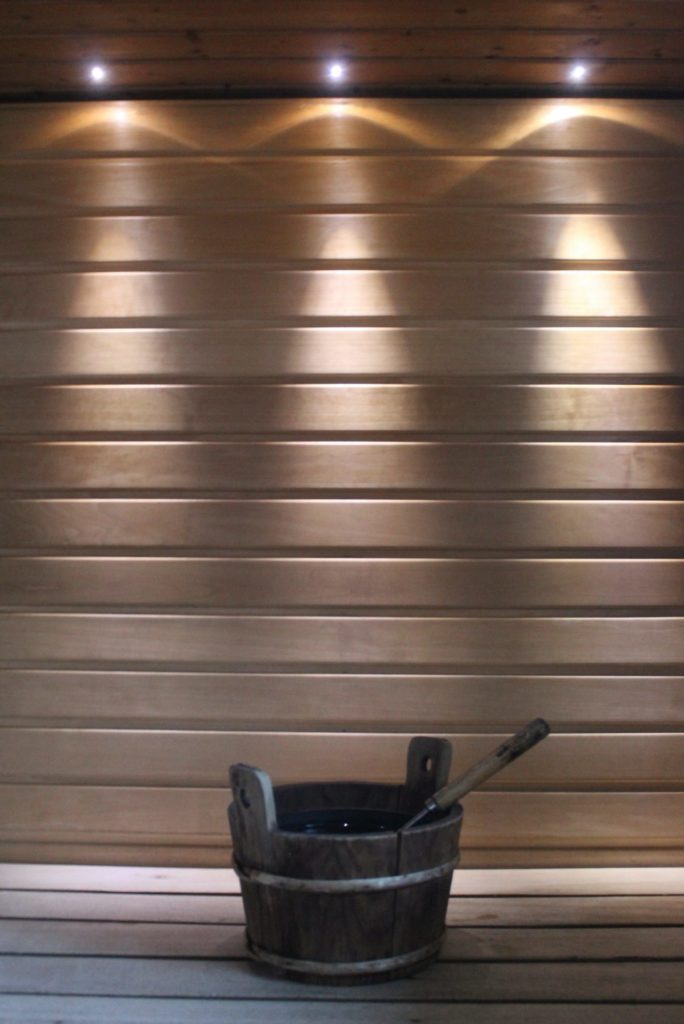Heat, like cold exposure, is one of the two types of temperature adaptations. In my thought construct ‘Ancestral Health’, it is something we humans cannot escape – we have had to cope with both heat and cold on a regular basis. In our air-conditioned homes today, we almost never have to deal with cold or heat.
However, regularly reintroducing these ancient temperature stimuli comes with tremendous health benefits. It works most effectively in a sauna. Humans intuitively seek comfort to stay alive, yet it’s not automatically the ‘right’ thing to do – especially in our non-threatening and sheltered world. We need stress to become and stay strong, the very stimuli external stressors like heat & cold bring. Ice bath & sauna. The technical term for this is hormesis.
We’ll look at the exact meaning first, before talking about the individual benefits and finally the two practical protocols.
What is Hormesis?
Our body is an adaptation machine. It always aims for the perfect, yet unattainable, balance. Hormesis describes exactly this constant balancing act. Certain things upset this balance and your body has to make adjustments to make up for it – and to be better prepared next time. These things can be environmental influences like temperature, or outside chemicals like polyphenols.

There is environmental hormesis & xenohormesis.
- Environmental hormesis describes external habits that tip the balance, such as exercise or heat.
- Xenohormesis revolves around foreign substances that manipulate our internal balance, such as environmental toxins, but also plant substances and polyphenols.
Environmental hormesis is clearly to be preferred, with things like training, fasting & temperature adaptation. Xenohormesis, especially with botanicals, I dismiss as nonsense in most cases. I would argue against David Sinclair’s point for xenohormesis & beneficial botanicals.1Often substances like curcumin, sulforaphane, or caffeine are attributed extremely positive much as they trigger certain factors in the body like Nrf2 or the COX enzymes. In my opinion, clearly pharmaceutical effects. This is not something that should be in the diet on a regular basis. These can be triggered much more safely by environmental habits. Many plants together with their molecules are suitable as remedies, yet these things should not become food. But that’s just in passing. We are taking care of one aspect of environmental hormesis today!2Effects of heat and cold on health, with special reference to Finnish sauna bathing
Cold & heat also activate different systems in the body and shift the inner balance. So your body is forced to adapt and to better cope with the stress the next time. Just like strength training!
What are the Health Benefits of Sauna? And are there Drawbacks?
Hormesis revolves around an unattainable balance. It is an ongoing process and the individual triggers also exist on a spectrum:
- Too little of an input will have no effect and will neither trigger adjustments.
- Too much increases the chance that something will go wrong unintentionally.
A vivid example here is strength training, which is either done half-heartedly or too extreme. The ‘right dose’ is very beneficial and triggers intentional adaptations – so it is important to determine this dose. What exactly this means in practice is very individual and depends on your experience, previous adaptation, your body, and the amount of time you want to spend. Therefore, it is very important to be present and listen to your body. Also, you should give yourself time to build a practice -no one starts with 3x weekly 10 minute ice baths.
Next, let’s look at the science of hardening yourself against heat in order to adapt to it. Many of these positive effects can only be achieved specifically through this.
What are the health benefits of the sauna?
Heat Therapy for a Healthy Cardiovascular system
The strongest effect of heat therapy, first of all sauna, is on the cardiovascular system.3Heat therapy: mechanistic underpinnings and applications to cardiovascular health
A sauna session is very similar to moderate cardio4https://www.foundmyfitness.com/topics/sauna#cardiovascular-health, which is why researchers & therapists use it to stress patients who can’t walk. When your body starts to overheat the first thing it wants to do is sweat more and cool down the blood. The vessels dilate and the heart works hard to move a lot of blood to the cooler skin and, in combination with the evaporative energy of the sweat, to release heat. Consequently, you also use more energy & oxygen. Per ~20 minute session you also lose about 0.5kg of sweat and some minerals.5Benefits and risks of sauna bathing[/mfn].Sauna has neuroprotective Effects

BDNF acts on some centers in the brain and helps nerve cells maintain their connections. It is one of the powerful substances in this field and thus supports mental health, higher thinking, learning ability, memory and good thinking ability. Therefore, it is no wonder that heat therapy shows outstanding results in terms of depression, anxiety and neurodegenerative diseases like Alzheimer’s.5Heat therapy: possible benefits for cognitive function and the aging brain
But why does your brain release BDNF? Neurons are very sensitive to heat and once they are overcooked they are irreversibly lost. In this sense, BDNF is a protective mechanism against neuron loss.
Heat Therapy helps to balance Inflammation
Sauna has equally powerful effects on inflammatory responses, through substances called interleukins. The effects here relate less to acute inflammation, but to the low-level chronic inflammatory conditions that plague our society.
The hormetic effects of sauna, as well as ice baths, cause your body to produce the interleukins IL-6 & IL-10. Studies have investigated the effect of these on HS-CRP (high-sensitivity C-reactive protein), as it is a well known marker of inflammatory states.6Sauna bathing and systemic inflammation This happens because your body wants to cope with the stressor in order to face it stronger and better adapted next time.
Sauna for Hormonal Health

Another reaction of your body to the external heat stress is the release of hormones, especially growth hormone (HGH) and insulin regulation. Especially growth hormone stimulates it strongly, 3-5 fold increases are quite normal, even up to 16 fold(!) increases have been measured in research trials.7How the sauna affects the endocrine system
As a powerful hormone, HGH has many effects and mainly acts anabolically on muscles, liver, bones and connective tissue. Insulin has anti-catabolic effects and causes the storage of resources, but heat regulates insulin and helps it perform its function in a more coordinated manner. Also, heat has effects on prolactin, DHEA, and testosterone.8Endocrine Effects of Repeated Hot Thermal Stress and Cold Water Immersion in Young Adult Men
Optimizing Sports Performance & Heat Resilience
We have already seen that the sauna works similarly to endurance training. But also important is the effect that your body acclimatizes to the heat. This happens in several ways:
- Your heart gets better at moving blood to your skin where it can cool down. It becomes more efficient at it.
- Consequently, in warm environments or due to lots of exercise, your body can better maintain your body stem temperature.
- With better blood flow, nutrient delivery also improves.
Overall, you tolerate summer temperatures better and can perform better. Sauna does effectively harden you against heat. One theory is that one of the main factors in why you finish a set is inhibition of pyruvate kinase, a clocking aerobic as well as anerobic energy provider. 9Skeletal muscle adaptations to heat therapy
Sauna supports Detoxification
The last major health effect of sauna is a greatly increased ability to release toxins through sweat. This can be done by exercising in the heat or sauna sessions – the main thing is that you sweat a lot. So some substances can be transported out of the body this way:
- Heavy metals (arsenic, lead, cadmium, cobalt, …)
- Bisphenol (like BPA, BPS, BPC, and what they are all called).
- Phthalates
Heavy metals are unfortunately found in our environment due to pollution. However, sauna has shown that it can significantly help detoxification – in the range of 3 times to 17 times(!) compared to baseline depending on the metal.
Phthalates as well as bisphenol we all ingest from plastic. They are used as coatings and plasticizers. Even in isolated groups of tribes in Siberia, these substances have been detected in urine. They are now everywhere. Therefore, we cannot eliminate them, only avoid them as best we can. Nevertheless, sweating and the sauna can help us cope better with these known pollutants – for the sake of our hormonal health.10Arsenic, Cadmium, Lead, and Mercury in Sweat: A Systematic Review
The Downsides of Sauna
Sauna impairs Male Fertility
As with everything in life, nothing is just good, but must be weighed, so also with sauna & co. The negative effects on male fertility and sperm quality are established in the literature.11Seminal and molecular evidence that sauna exposure affects human spermatogenesis
Sperm cells don’t like it warm, even the body with its ~37°C is too warm for them, so they prefer to hang out outside. In a sauna, however, nothing becomes of ‘below 37°C’, the room is by definition around 60-90°C warm. Usually you also sit there for quite a long time and sometimes in several sets. That kills sperm cells. Literally. Women are luckier and don’t seem to be affected because their eggs are well protected inside and the core temperature is tightly controlled.
The effect occurs after a few weeks, but fortunately is completely reversible within 1-6 months WITHOUT sauna. So if you want children and are a man, avoid sauna completely. It is an established no-go, despite the powerful metabolic effects.
Sauna causes the Body to lose Water & Electrolytes

Getting hot implies sweating. A lot. With sweat, you lose a lot of water, but also some of the four electrolytes – sodium, chloride, potassium and magnesium. You also lose trace elements. Per 20-minute session you lose about 0.5kg of water. That’s quite a lot if you go to the sauna 2-3 times for two such sets.
Therefore, make it a habit to replenish your electrolytes shortly after the sauna:
- A great way is 1l still mineral water with trace element drops and a good pinch of rock salt. This will get you quite a bit of bioavailable magnesium, sodium & chloride back in.
- Also a good electrolyte powder will do – look for bioavailable forms (avoid oxides & citrates, use e.g. magnesium malate/-threonate/glycinate). My favorite: the salt mix*.
- Coconut water is also a good choice regarding potassium.
- Also does a generous meal after coming home, like a big steak, with lush salt – rich in magnesium, potassium, sodium, and chloride as well as many other nutrients.
The Dangers of Hyperthermia
Severe or prolonged hyperthermia is not a problem for most standard users. Our goal is short-term hyperthermia and our protective instincts usually protect us from severe damage. However, if you gain experience, adapt a lot and become advanced, you should know about this danger. Long sauna sessions and more extreme activities like ‘hyperthermic running’ (e.g. running with winter clothes in high summer or in a sauna suit) have this risk.
As far as temperatures are concerned, heat is much more dangerous than cold. Humans are much better adapted to heat than to cold, so they can handle quite a bit from home. The biggest problem is the irreversible nerve damage that comes with real heat shock. Once sizzled, they don’t come back. Also, it’s a seeeeeeery uncomfortable situation, but so is hyperthermia. Fortunately, none of us will ever get into these areas, yet it is a real risk and without knowledge, you can’t work with it.
The Science of Sauna & Heat Therapy
Release of the Heat-Shock Proteins
Your body secretes so-called heat-shock proteins (HSPs). There are also cold-shock proteins. Both are hormetic proteins that are triggered in response to these extremes. Both are also long conserved, meaning that they have existed unchanged in various organisms for quite some time. They are very important for life.12Could Heat Therapy Be an Effective Treatment for Alzheimer’s and Parkinson’s Diseases? A Narrative Review
In every cell these hormones are found, a heat event only increases the activity strongly up to 50%. Heat denatures proteins, they can lose their structure – No Bueno. The Heat Shock Proteins work exactly against this and help to avoid this inner chaos, so that the proteins can continue their function in an orderly way. That’s why they’re also closely linked to some neurodegenerative conditions like Huntington’s or Alzheimer’s. But not only heat, but also other hormetic effects like fasting or hypoxia stimulate their work.13Identification of heat shock protein family A member 5 (HSPA5) targets involved in nonalcoholic fatty liver disease
NRF-2 – The Gatekeeper of Anti-Oxidation
NRF-2 is a transcription factor – meaning it can turn genes on and off. You often read about NRF-2 in connection with the antioxidant system, because it acts as a gatekeeper, so to speak, and wants to protect the cells from too much oxidative stress & inflammation.14Role of Nrf2 in Oxidative Stress and Toxicity Many things trigger NRF-2 to go from the cytoplasm to the nucleus:
- Environmental hormetic factors such as temperature, fasting or exercise
- Xenohormetic factors such as glucoraphane from broccoli or curcumin from turmeric
- Toxins such as alcohol or car exhaust fumes
The biggest misconception is that it is a good thing to activate NRF-2, but as we see from the third point, this is not true. It is simply a way for the body to cope with stress, no matter what the stress, good or bad:
- Environmental hormesis comes without major drawbacks and I would describe as broadly positive in its effect – with the best habits falling into this.
- Smoking, binge drinking, glue pulling and exhaust fumes are definitely not among them and fall into the category: ‘pro-oxidant’.
- Xenohormesis falls in the middle. This includes drugs & phytochemicals. Many trigger NRF-2, but that’s not enough to label them as good. I would even label most as harmful in terms of food. As remedies, however, plants can work well. Just as ibuprofen should not be a food, curcumin or quercitin are not.
Interleukins – Mediators of Inflammation
Interleukins are molecules that are needed for a well-tuned inflammatory response – they have both inflammatory and anti-inflammatory effects depending on the substance.
Heat exposure triggers the increase of large amounts of interleukin-6 (IL-6), which in itself is pro-inflammatory. IL-6 also rises sharply after exercise, for example. So why did I call heat exposure anti-inflammatory? Because IL-6 subsequently stimulates IL-10, which is a powerful anti-inflammatory.15Heat induces interleukin-6 in skeletal muscle cells via TRPV1/PKC/CREB pathways As you can see, IL-6 is the somewhat broader initial response to stress to elicit healthy & intentional levels of inflammation before IL-10 by itself downregulates the effect in the long run.
What are the Best Protocols for Heat Exposure?
With our fairly extensive background of biological facts, we can now build a protocol for how best to achieve heat adaptations. The three protocols below are designed for general health, with the goal of stimulating you with an optimal dose of heat stress for a long time. One protocol also briefly cuts to how in the papers the extreme levels of growth hormone were achieved.
The Sauna-Protocol

Probably the most unbeatable way to expose yourself to the heat is the sauna. It’s simple, has little risk, and many people have access to one, often even as part of the gym experience. So let’s first look at what kind of sauna it would be best to have:
The best is the Finnish sauna, dry and hot. Remember, what we want is as much heat stress as possible. Usually they have 70-100°C.
Steam baths & hammams work too, of course, but are far from optimal. They are ‘too cold’ and too humid to induce comparable hyperthermia in your body. Russian saunas fall somewhere in between and also do not reach the effectiveness of their Finnish relatives.
On Optimal Timing
Next, let’s look at optimal timing:
- Sets of 10-20 minutes work best for most people.
- After a set, you should cool down ice cold and take a break of the same length.
- Optimal are ~1-2 sets per session.
Even once a week shows good effects if done regularly, yet there is clearly a dosage effect that flattens out at 4-6 sessions a week. That’s a ton of time in the sauna. It’s up to each person to decide, but don’t think just 1 or 2x a week is pointless then.16A great podcast, albeit in English, that looks at all this in detail is this episode of the HubermanLab podcast.
The Sauna Protocol
Important to know is that we want to increase slowly. We want to progress sustainably and for a long time, too fast is not good here either, because as heat adaptation progresses, the rewards diminish. However, if you want to shock your system, as with the 16-fold increase in growth hormone, a lot of it will be released. However, this should not be the norm and only an occasional intervention seen over several months.
So how can we combine all the benefits into simple protocols? The answer is, it depends on your time:
- General health: one sauna session per week with increased intensity of 2 to 3 sets of 10-20 minutes each is a good goal to work towards. A second session is of course also possible, but then reduce the volume down to 1-2 sets of the same duration. Sauna is best planned after a workout or on rest days.
- Frequent sauna users: 2-5 sessions per week, but keep the intensity low at ~1 set of 20min. Add a second one when you are confident enough. Go to sauna after exercise or on rest days.
- Growth hormone maximalization: Shock your system. In the study, subjects were sent to the sauna three times a week for a total of 4(!) hours. The levels dropped from session to session. Therefore, as a shock, you can incorporate such an intervention on a monthly basis, e.g. in deload weeks. Conceivable would be 2-4 sets of 20-30min in the morning, followed by the same number in the evening. Not for the untrained!
- Refuel! After your session, drink a liter of mineral water with a good pinch of rock salt. Eat nutritious food afterwards. Avoid fasting. If you are fasting, add some salt mix* to your water.
| General health: 2-3 sets per session of 10-20min, 1-2x per week. | Refuel, then with 1l of water & electrolytes. On a rest day or after training. |
| Growth hormone: morning & evening 2-4 sets of 20-30min. Targets for a total duration of 3-4h. | It is a matter of systematic shock. Be aware of electrolytes and nutrition. Be aware of hyperthermia. Observe rest periods. Not for beginners. |
| Frequent sauna users: 1-2 sets per session of 20min, 2-4x per week. | Same as the first. Slowly work your way up with the volume, as you know it from strength training. |
Hyperthermic Running as an Alternative

Hyperthermic Cardio is very unknown outside of extreme sports and martial arts, where it is popularly used to make weight. Basically, it’s quite simple:
- Go running on a hot summer day, in winter clothes or in a sauna suit.
- Try not to overheat too much and have fun.
It’s going to be a challenge, Rocky! Not only physically, but especially mentally. That’s why it’s often done in the more extreme running community. We can use the same for heat adaptation and acclimatization. Hyperthermic running is something for experienced and fit people who can also run and especially know their body honestly. It is not dangerous, yet the risk of entering serious hyperthermia is greater, though still nowhere near as great as the growth hormone protocol from above:
- As with sauna, shorter sets of 5 to 15 minutes work best. You want to overheat, at least for a short heat shock. Therefore, run in a relaxed manner, it will be hard all by itself. You can always add intensity and multiple intervals as you go along. Rest between intervals.
- Afterwards it is also important to refuel. With plenty of water & electrolytes.
Fußnoten & Quellen
- 1Often substances like curcumin, sulforaphane, or caffeine are attributed extremely positive much as they trigger certain factors in the body like Nrf2 or the COX enzymes. In my opinion, clearly pharmaceutical effects. This is not something that should be in the diet on a regular basis. These can be triggered much more safely by environmental habits.
- 2
- 3
- 4
- 5Benefits and risks of sauna bathing[/mfn].
Sauna has neuroprotective Effects
Another health benefit of sauna is the protective function on our nervous system and the associated mental health. This protection is mediated by increased levels of Brain-derived Neurotropic Factor (BDNF).
BDNF optimiert Deine Hirnfunktion.
BDNF acts on some centers in the brain and helps nerve cells maintain their connections. It is one of the powerful substances in this field and thus supports mental health, higher thinking, learning ability, memory and good thinking ability. Therefore, it is no wonder that heat therapy shows outstanding results in terms of depression, anxiety and neurodegenerative diseases like Alzheimer’s.5Heat therapy: possible benefits for cognitive function and the aging brain - 6
- 7
- 8
- 9
- 10
- 11
- 12
- 13
- 14
- 15
- 16A great podcast, albeit in English, that looks at all this in detail is this episode of the HubermanLab podcast